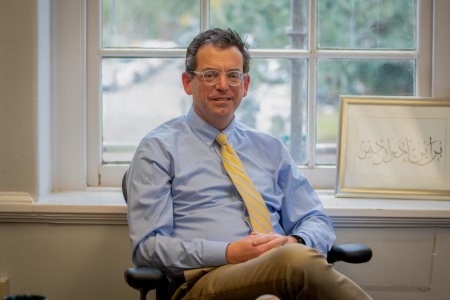Liberating Tulane’s liberal arts
Tulane is changing.
It isn’t hard to see, or hear, for that matter: construction is creeping across campus like a welcome plague. The steady development of the Downtown campus, gone largely unnoticed by undergraduates, will soon be home to four schools and most of the university’s research facilities, according to President Mike Fitts.
Will the Class of 2027 graduate from a substantially different school? Will some departments, such as the arts and humanities, succumb to dismal national trends of declining enrollment, especially as the university focuses on developing its biomedical research enterprise?
Victor Holtcamp Ph.D, chair of the Department of Theatre and Dance, admitted that “[their] enrollment has not been as strong as it used to be in days gone by,” but still, he remains optimistic.
“We’re holding relatively steady,” Holtcamp said. “Which is about 20, 30 majors in theater and about an equal number in dance. But what is exciting is that people still want to do theater … We’ve got a lot of folks who take classes or audition and perform in shows who aren’t official majors but are still actively participating.”
Holtcamp’s vision for the performing arts places interdisciplinary collaboration front and center. He noted the “cobbled together” nature of Dixon and McWilliams Halls; in a future that is in function increasingly interdisciplinary, the incongruity of the building’s form just won’t do.
“If a magical donor shows up with $45 million or so, then … we will tear this place down in a heartbeat,” Holtcamp said.
But this construction — both ideological and physical — of the future of the liberal arts as interdisciplinary is an artifact of our present moment, which is one characterized by its emphasis on “hybridity.” I immediately associate the term with my high school’s approach to instruction during the pandemic, but it is also used in contemporary discourses on race, identity and multiculturalism. Higher education, Tulane included, is a part of this move towards hybridity. Harvard’s dean of arts and humanities recently stated that his mission was to “disaggregate what departments do” to suit students’ interests more specifically.
However, shifting cultural ideas and the need to prepare young adults for an increasingly dynamic world that calls for a diverse skill set are not the sole reasons for this trend. It is perhaps primarily in response to a specific, immediate need on the part of the university: to keep enrollment from falling.

In my conversation with the Tulane Dean of Liberal Arts Brian Edwards he emphasized the school’s success in the face of national trends.
“What’s interesting at Tulane,” he said. “… is that here, unlike some of the national trends, enrollments in the liberal arts have actually been going up.”
He attributed increased enrollment to the establishment of new, highly hybridized programs like environmental studies, digital media practices, Africana studies and the SLAM minor.
Recently, I looked at the course options in environmental studies with my sister, an incoming first-year interested in the program, and I saw what Dean Edwards was talking about. There are dozens upon dozens of courses that count for credit in the major, ranging from architecture to economics to public health.
Is such extreme interdisciplinarity mostly an attempt to keep Tulane’s enrollment in the School of Liberal Arts beating national averages? I’m going to venture a guess and say probably so.
While my initial response to this realization was disappointment and cynicism, it eventually dawned on me that the reconfiguration of the department in form and function is only a sign of failure if we define the liberal arts by no more than the list of disciplines that has historically constituted them.
In the words of Dean Edwards, the liberal arts are “a way of approaching the world or problems that in itself will help prepare you for what’s next.” In this sense, there is nothing mutually exclusive between the growth of the university’s biomedical research enterprise and the liberal arts. Increased dialogue between STEM and the liberal arts — if such a distinction remains valid — could raise up the university in its entirety. Of course, this metaphorical ‘raising up’ essentially means raising funds — funds that should be directed toward the renovations of arts buildings on campus.
Fortunately, this seems to be the case. A renovation of Newcomb Hall will begin next year and plans to renovate Dixon Hall are currently being drafted.
If the alternative is waiting for some sea change that will make all the country’s teenagers return to the English major, it’s better to liberate the liberal arts instead.
Your donation will support the student journalists of Tulane University. Your contribution will allow us to purchase equipment and cover our annual website hosting costs.



